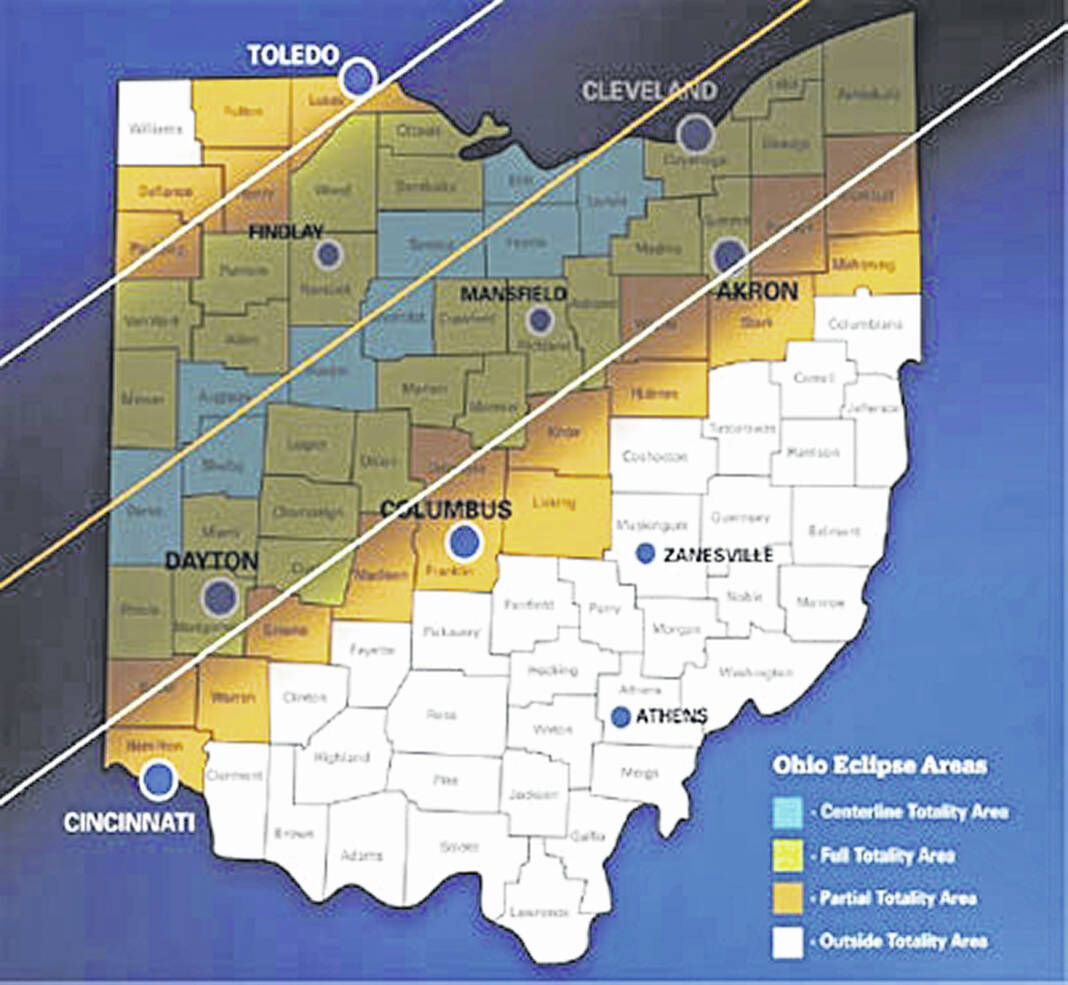
Andy Russell recently presented information to the Urbana Lions Club about the April 8 total solar eclipse that will affect Champaign County. Pictured from left are Andy Russell, Champaign County Environmental Health Director; Ben Headlee, Club President; Steve Moore, Program Chairman.
Submitted photo

This graphic shows the path of the solar eclipse in Ohio.
Graphic from ODNR
On Monday, April 8, between 3;08 p.m. and 3:19 p.m., people within a 124-mile-wide band in the state of Ohio will experience a total solar eclipse. This band includes Champaign County.
Local entities are organizing viewing events and preparing for a possible tourism surge in the area related to the eclipse.
A total solar eclipse is a rare and spectacular event, according to the Ohio Department of Natural Resources. On average, one happens somewhere on the earth only once every 1.5 years. Only 21 total solar eclipses have crossed the lower 48 states in the entire existence of the United States.
Areas in Ohio that are outside the path of totality will experience a partial eclipse.
The last total solar eclipse visible in Ohio was in 1806. The next total solar eclipse in Ohio will be in the year 2099.
A solar eclipse occurs when the moon casts its shadow on the earth as it passes between the earth and the sun. A total solar eclipse occurs when the moon appears to totally obscure the sun. The moon’s shadow will travel at 2,110 miles per hour on average across the state.
Safety is the number one priority when viewing a total solar eclipse. Viewers must be familiar with when to wear specialized eye protection designed for solar viewing by reviewing these safety guidelines provided by NASA:
Interesting facts from NASA
-After the total solar eclipse on April 8, 2024, the next total solar eclipse that can be seen from the contiguous United States will be on Aug. 23, 2044.
-Viewers can’t normally see the corona – the sun’s outer atmosphere – because the sun’s surface below it is so much brighter. But during a total solar eclipse, the corona becomes visible, offering unique opportunities to study it.
-When the moon completely blocks the visible surface of the sun during a total solar eclipse, viewers can remove their eclipse glasses. A total solar eclipse is the only type of solar eclipse where eclipse glasses can be momentarily removed.
-When a solar eclipse reaches totality, nocturnal wildlife sometimes wakes up, thinking that it’s nighttime, and non-nocturnal wildlife might think it’s time to head to sleep.
Info from from ODNR, NASA and Rooted in Ohio

